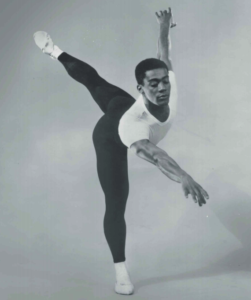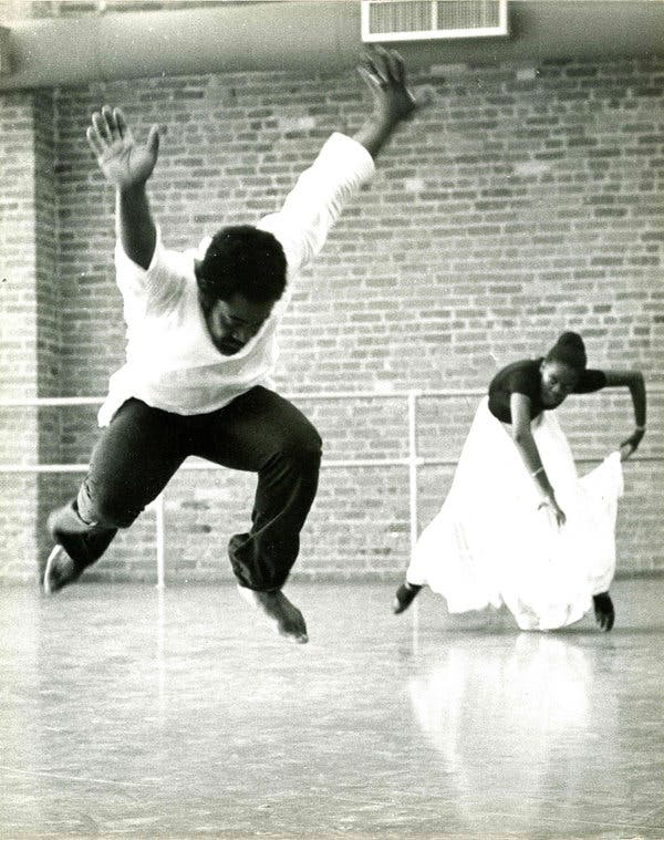From Ballet to Broadway and Black and Louis Johnson

In 1952, Louis Johnson was turned away from a role in a ballet because he was Black, reflecting the lack of opportunity that many Black dancers faced in the mid-20th century. George Balanchine, at the New York City Ballet, didn’t think it was time for a pas de deux that had dancers of different races. Thus, Johnson turned to Broadway for an opportunity to dance. Johnson performed as a dancer in the reprisal of the 1934 production of Four Saints in Three Acts in 1952. Other shows Johnson performed on Broadway were My Darlin’ Aida, House of Flowers, Hallelujah Baby!, Les Blancs, Kwamina, and Bob Fosse’s Damn Yankees on stage and on screen.
 More about Louis Johnson
More about Louis Johnson

Louis Johnson was born on March 19, 1931 in Statesville, North Carolina but grew up and spent most of his childhood in Washington DC. The Johnson family lived two blocks from the YMCA, and Johnson took advantage of all the activities the “Y” had to offer. He was a great athlete and became a champion wrestler and noted acrobat. When the YMCA had to close for repairs, the YWCA offered them space. The ballet teacher at the YWCA noticed Johnson and gave him a scholarship at the Doris Jones-Clara Haywood School of Dance. After initial study at the Jones-Haywood School of Dance, he moved to New York in 1950 to accept a scholarship at the School of American Ballet.
In 1952, Johnson performed with the New York City Ballet in the premiere of Jerome Robbins’ Ballade. Robbins also used Johnson to create the role in Afternoon of a Faun, but because Johnson was Black he was not allowed to dance the role. In 1953 George Balanchine didn’t think New York City Ballet was ready for a racially mixed pas de deux.
Throughout the 1950s, Johnson danced on Broadway in several shows including My Darlin’ Aida, House of Flowers, and Hallelujah Baby! He appeared in both the stage and screen versions of Bob Fosse’s Damn Yankees.
He also performed in the Broadway productions Les Blancs, Kwamina, and Four Saints in Three Acts (revival).
Johnson began making dances in 1953 and achieved his greatest fame as a choreographer who comically combined a continuum of movement styles, including social dances, popular music, classical ballet technique, Katherine Dunham-inspired modern dance, spiritual dancing, and acrobatics.
Sources:
Louis Johnson, MoBBallet
Louis Johnson, School of American Ballet
 Nicole Toney
Nicole Toney


